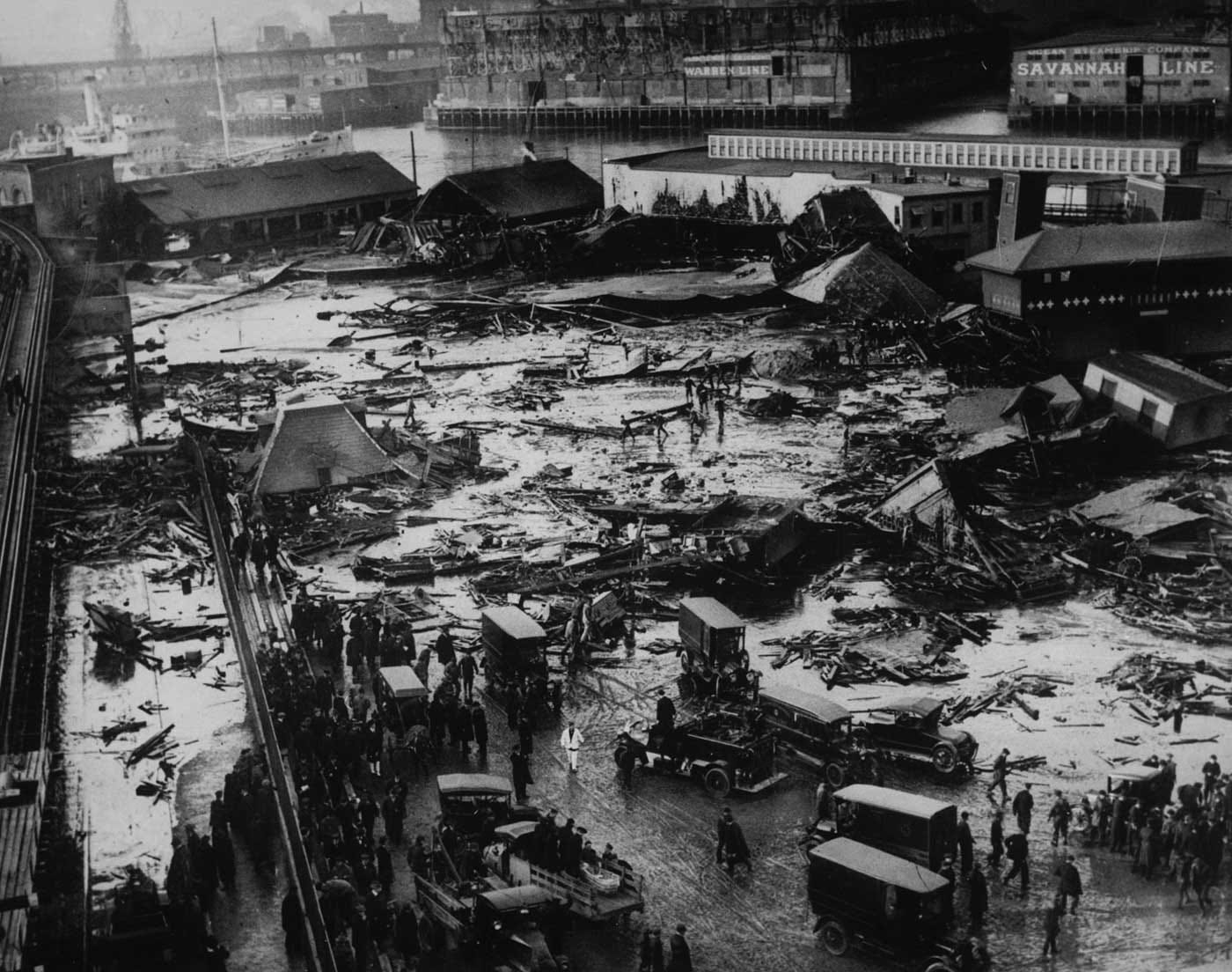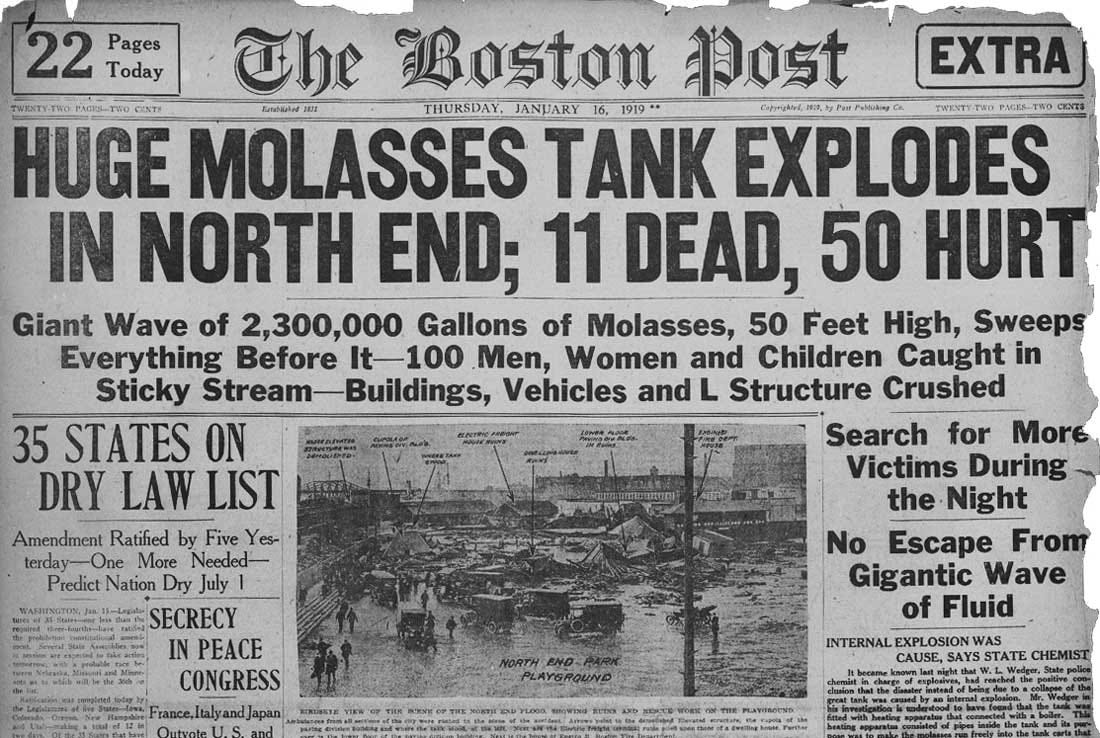If All Of You Could Be More Like Me...
We'd all murder each other with two million gallons of molasses.
I have this thought, which I apply more to other people than to myself. Actually, a question. Would the world be better or worse if everyone in it were more like me?
That sounds very noble, except I ask it about other people so I can come to the almost instant and irrefutible judgement of Worse.
Like, if everyone in the world were like that person over there, it would be so much worse of a place to live. Thankfully I’m not like them.
I’ve been thinking about these things in terms of social media. Anti-social media? I think people like me are trying to protect themselves by social distancing from the more negative aspects of the online world.
It can be very painful, on the one hand, to see friends and family and acquaintances going at it online—or even people you don’t know and will never meet—and, on the other hand, to realize people you thought you knew think very differently from you about things you hold dear.
I’m a sensitive soul, so the negativity gets to me and I avoid it for my own sanity and peace of mind. Other people wade into the metaphorical firestorm with metaphorical flamethrowers, gritting their teeth for the fight. They pursue a scorched earth policy with napalm-laced comments and grenade-lobbed tweets.
Except I am those kinds of people too!
I’ve posted grenades and commented napalm. I am the worst of both kinds of us, running from the tension to protect myself, while jumping in from time to time to make everything a little worse.
How I can behave online in a way that if everyone did the same we’d all be much happier and more at peace with one another?
It doesn’t have to be rainbows and butterflies and unicorn tears. Just, you know, a little bit more neighborly. The way we’d treat each other in person, for a start.
I do see examples online of people respecting one another, disagreeing with tact and grace, and causing the whole landscape of the internet to feel lighter, airier—a nicer place to be.
So I know it’s possible.
But it does seem out of reach a lot of the time, especially during this neverending era of crisis and controversy. And I don’t just mean this year. It has felt this way for a long time.
The temptation is always to jump in, guns blazing. We are so right, and they are so wrong, and we are so clever, and they are so in over their heads, and we know how to say just the right thing to bring their whole argument crashing down on their heads. The thing which amounts to, ‘You smell bad and here’s the proof! Na na na na boo boo!’
The rage needs an outlet.
And our righteousness needs to be recorded so history will know how true and right and brave and good we were.
You know, for posterity’s sake.
I used to have a teacher who liked to say, ‘You were given two ears and one mouth, so you need to listen twice as much as you talk.’ Maybe that’s as good a starting point as any.
On a related note, OCSPLORA is proud to present to you the following history lesson from my good and bearded friend, Folksinger Dan.
Like many stories in the ether right now, it is about the THEMs and the USes and the tragedies that ensue when we put people like us above people like them.
And it is about an excremental ton of molasses.
Enjoy!
Floods Of Molasses And Racism
By Dan Cloutier
On January 15, 1919, a tanker holding 2.5 millions gallons of molasses exploded and caused a wave of molasses 10 feet tall moving at nearly 30 miles an hour, which left a trail of destruction and death in the mostly Italian neighborhood of Boston’s North End. The photos from the day make the city look like a war zone.

I grew up near Boston, received a degree in History from a college in Massachusetts, have always loved weird history, but I never heard about this strange and horrible day until I was 25. I also had absolutely no idea how deeply hated and cast aside Italian immigrants were in Boston around the turn of last century, but more on that later.
One summer day I was with a group of friends on a Duck Boat Tour when the driver and guide briefly mentioned the Molasses Flood in passing as we drove down Causeway Street, the same street the Celtics and Bruins play on. It was one of a thousand facts we learned that day, but the idea of molasses moving that fast and leaving such devastation created an instant spark in my brain. How could that happen? What did the devastation look like? Who was at fault? Why had I never heard of this before? These questions pulsed through my mind and I knew I had to learn more.
Can you imagine hearing a sudden noise and turning around to see a wave of brown goo rushing at you like a freight train?
The Molasses Flood became a strange obsession. I read all the books I could find about it, the greatest being Dark Tide by Stephen Puleo. I wrote a song about the disaster and later recorded it for an album. I bought children's books about the flood for my friends' kids. (Yes, there are multiple children’s books about a day of death and destruction.) And finally, I formed a band with three close friends called, you guessed it, The Great Molasses Flood. We even made our first album, a live album, on the actual night of the 100th anniversary of the tragedy at the legendary folk venue, Club Passim.
Now, some curious and odd details about the flood:
In the end, 21 people lost their lives on that strangely warm January day, along with over 70 horses.
The wave crushed the local fire station and the elevated train track was smashed to the ground.
Legend held in Boston for decades afterwards that you could smell molasses throughout the city on a warm day.
Here’s a horrifying quote from the Boston Post the next day:
“Molasses, waist deep, covered the street and swirled and bubbled about the wreckage …. Here and there struggled a form—whether it was animal or human being was impossible to tell. Only an upheaval, a thrashing about in the sticky mass, showed where any life was …. Horses died like so many flies on sticky fly-paper. The more they struggled, the deeper in the mess they were ensnared. Human beings—men and women—suffered likewise.”
So after a fifteen year personal plunge into this weird and frightful piece of history, why do I now feel this story is more important than ever and needs to be taught to future generations?
What makes this story more than just a unique, strange, and horrible tragedy?
At first, even for my own obsession, it was just the simple absurdity of the event that piqued my interest, but now I know there is an important lesson we all need to understand. Yes the poorly designed tank was always going to explode, but there is no way 21 people would have been killed by fast moving molasses if not for Boston’s deep history of racial division. It never should have been built so close to people.
Italians immigrated to America in large numbers at the end of the 1800s. Thousands found their way to Boston and gathered together in the North End, which quickly grew into one of the most densely populated parts of not just Boston, but the entire world. The Protestant elite of Massachusetts society were scared of the new members of their community because of their Catholic faith, different language, and many unfounded stereotypes. Laws were enacted to make it hard for Italians to become citizens. The impoverished Italians of the North End became a people with little say and power in the system.
What ties the Molasses Flood to the history of racism in Boston is the simple truth that an unsafe tank holding millions of gallons of molasses could not have been built in any other inhabited part of the city. The citizens would have protested and voted no. It was only in the Italian part of town where it could have been built because the majority of society viewed them as “other” or “less.”
It was The United States Industrial Alcohol Company who were rushing to beat the coming Prohibition that built the ridiculously unsafe structure so close to so many people. They looked the other way when the tank started to leak molasses out of its side, because at the heart of it all, they didn’t care about the people who lived so close by. The Italians were different, they were others, they didn’t matter, and the money was more important. That tank had no business being near that many people. It should have exploded in some industrial area with very few casualties.
Two of the 21 victims were just ten year old children playing in the streets of their home. Their parents found their crushed bodies hours later in the sticky mess.
When just one person is hurt, falsely accused, or killed because of their race all our humanity suffers. Americans need to reconcile that our history is full of stories just like The Great Molasses Flood where our ideals of “Liberty and Justice For All” did not happen. I do not know if any of my Italian American friends have ever felt direct racism, but I do know their great grandparents did. We need to stand with the people and races that still do. We live in the age of George Floyd, Breonna Taylor, the poisonous water of Flint Michigan, mass incarceration of African Americans, and so many other examples of tragic racism. The moment we learn the truth we are called to action.
I had never heard of the Great Molasses Flood until someone on a Duck Boat told me. I also would have never heard about George Floyd if there was not a video. Our society must be proactive in learning our true history if we ever really want to live up to America’s standards of freedom. We must shout from the tops of our lungs when injustice happens in our society, no matter how strange, crazy, or unsettling that story might be.

Boston Post image from Wikimedia Commons. ‘Panorama of the Molasses Disaster site’ photo from Flickr/Boston Public Library.
Thanks for reading along! See you back here next month. In the meantime, care to add a thought or two?


